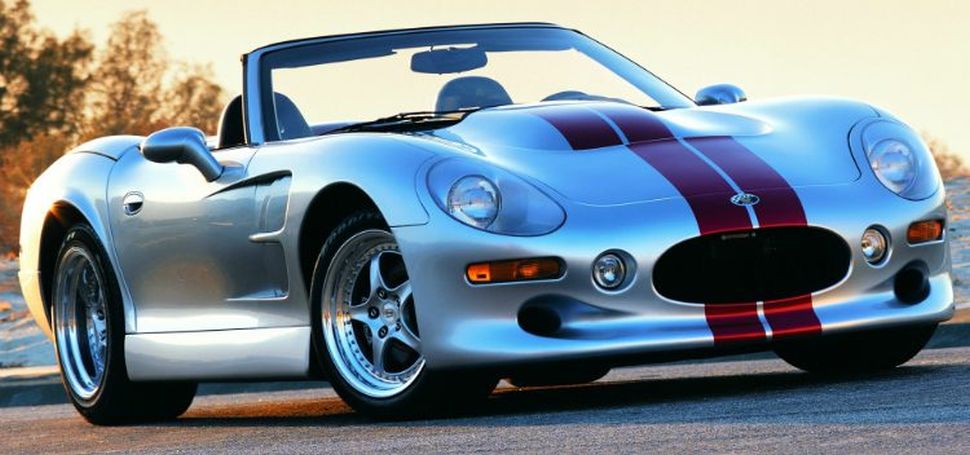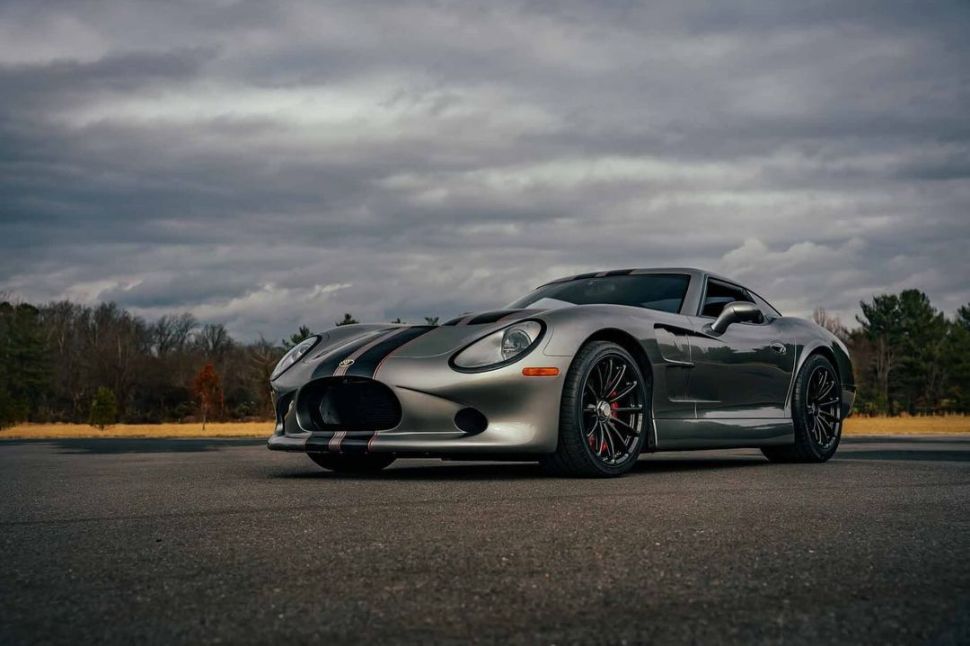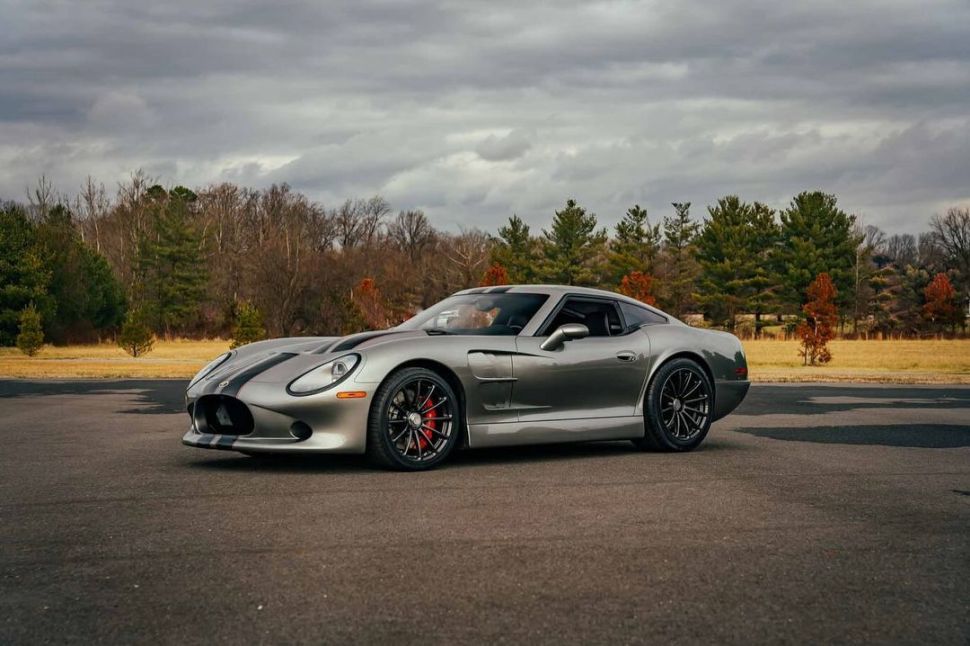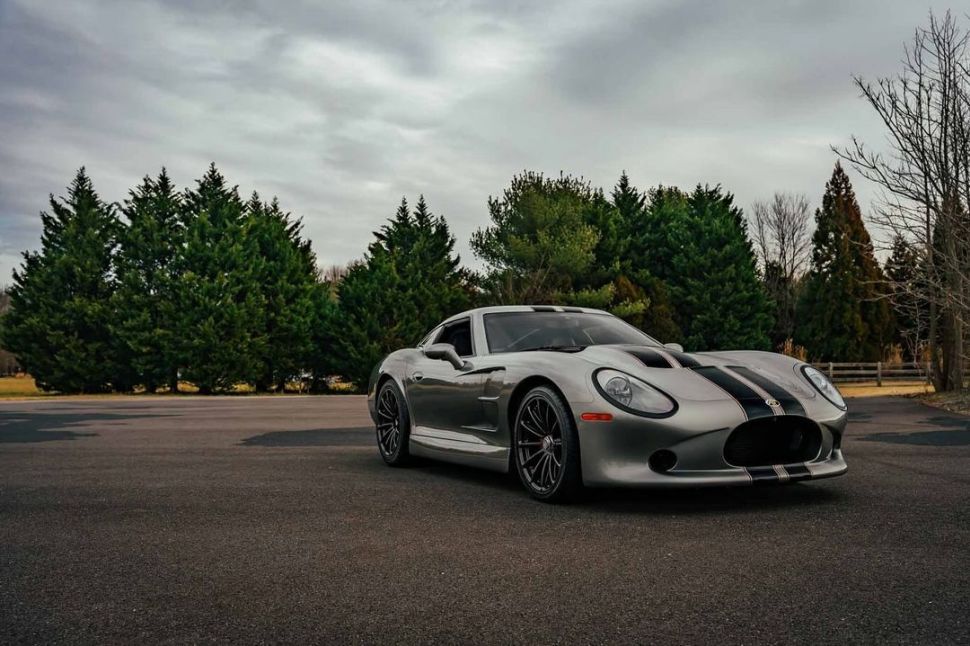A 25 year old car, sold as a new car, without an engine, for 400 to 500 thousand dollars? Still, you want it!
Generating brand awareness can be done in many ways. Carroll Shelby chose the “Yes Man” way. You may know Shelby from his racing successes in the early days for Ford, or the first spicy Mustangs, or the film adaptation of the aforementioned spicy Fords where Shelby was played by Matt Damon. However, Shelby's oeuvre goes so much further, from the still existing top versions of the Mustang, to its own tuning company that does completely different things with Mustangs and F-150s, to collaborations with Dodge in the 1980s and of course not entirely unimportant: the souped-up AC Ace to arrive at the Shelby Cobra 427 and ultimately the Shelby Cobra Daytona Coupé.
Shelby Series 1
The king of customized cars, but Shelby does not have a wide portfolio of its own models. In fact, the only car that came 'from nowhere' was plagued with so much hassle that perhaps Carroll Shelby was right and, as a shoemaker, should have stuck to the same lines. That was of course the Series 1 and actually the idea is not that crazy at all. The proportions and approach are reminiscent of the original Shelby Cobra, especially because the Series 1 would only be available as a convertible with a fabric roof.

To make a stand against cars like the Viper and Corvette, Shelby wanted to make the Series 1 different from a 'hot rod'. The engine is even surprisingly modest, a 'only' 4.0 liter V8 with a fairly conservative 320 hp. This was the L47 V8 from the Oldsmobile Aurora. Still, the Series 1 was quite exotic in terms of chassis, bodywork and even engine: the L47 received a series of upgrades that made the Series 1 something special. However, it was not a success: the car was too expensive for the fact that you got a rather plastic interior in return (with many borrowed parts from GM) and it was a fight against the ever-changing rules for road cars. Shelby would build 500 units of the Series 1, which remained at 249 units, all built in 1999. That's the short version, the long version has @willeme once explained to you.

Shelby Series 1 is back!
1999 is exactly 25 years ago this year, and so the Shelby Series 1 is being celebrated by the 'owner' of the model. A company called Wingard Motorsports bought the rights to revive the Shelby Series 1. They already did this in 2018 with the Series 2, but now there is something new: a Series 2 Coupe.

So Wingard not only has the rights to the Series 1, but also leftover parts and never-finished cars. After all, Shelby would make many more cars than were ultimately sold and those remaining cars still exist. Not only will they be upgraded for 2024, they will even be fitted with a coupe body. This way we can enjoy a modern Series 1 with coupe proportions, and that is not a strange sight.
No engine
Technically, the Shelby Series 2 Coupe is a somewhat difficult story. In any case, the chassis has been upgraded to handle hellish forces. Think pushrod springs, huge brakes, a 'transaxle' gearbox to maintain the 50/50 weight distribution and the gearbox itself is a six-speed gearbox with paddle shifters. The bodywork is made of aluminum or carbon fiber and the whole lot – including engine – should weigh less than 1,450 kg. Not bad for 2024. Also not crazy: the setup could handle engines with up to 1,100 hp, which sounds promising.

Small thing: it is not said which engine is used. In fact, if you subtract the starting price of $385,600, you get no engine. That's the fun of it: current Shelby officially approves this project as if it were one of their own creations (which of course it largely is) and makes several engines available to spoon into it. So you can stick with a modern Mustang engine, the 7.3 liter 'Godzilla' V8 fits in principle, but you can even install e-motors and a battery.
Duration
So the problem is that you actually only have a rolling chassis for 385,600 euros. You can supply and install an engine yourself, but Shelby's 'ready-made' options cost anything from $85,000. Then you are already at $470,000. What you want to make the carriage from also influences the price. There will be ten copies: seven made of carbon fiber, three of aluminum. The $385,600 is for the carbon fiber copies, the aluminum copies cost everything from $498,200 EXCLUDING the engine, including a big $583,000, which can easily amount to 700 or 800 thousand (!) dollars. In itself it's a great story that you get an 'authentic' Series 1, but then 100,000 dollars for a Series 1 in 1999 suddenly didn't sound so bad.
This article 25-year-old car without engine costs $400,000(!) first appeared on Autoblog.nl.
#year #car #engine #costs
